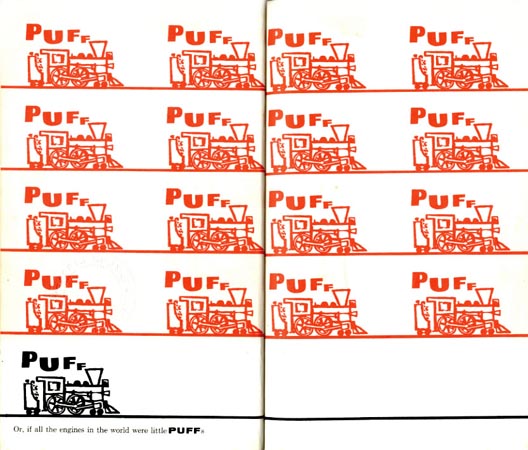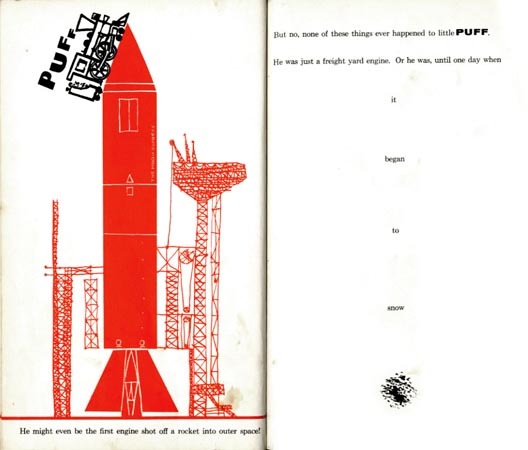Four Inventive Children’s Books
How to make a kitten, escape a monster and fix clocks in our roundup of clever kid lit

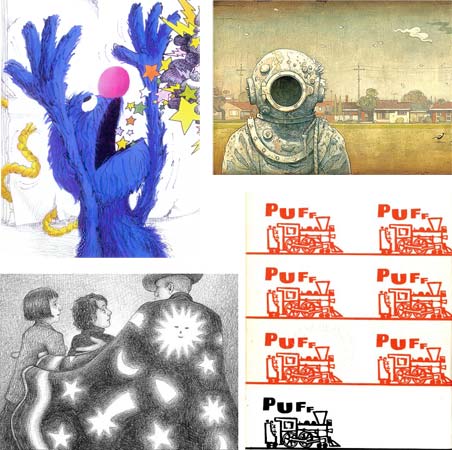
Modern parents know that today’s children’s books, while often overlooked as serious literature, can convey rich, complex worlds that appeal to more than just the elementary school set. We looked around to find the latest that expand the genre best, picking “Puff” and “The Monster at the End of This Book” for their visually-rich and surprising stories. Much like the acclaimed “Where The Wild Things Are”, these books exemplify youth literature just as they transcend it.
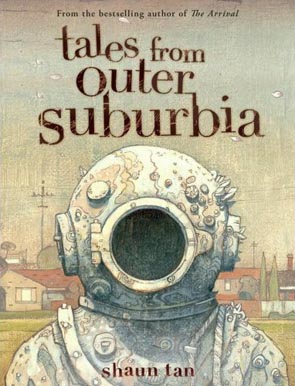
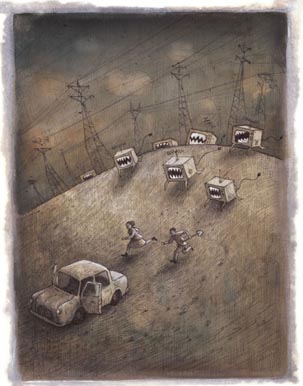
Published in the U.S. last year, “Tales From Outer Suburbia” is a collection of short stories about the suburbs. But its strange rationale and amazing twists on text, font and reading, implode the neighborhood. Author Shaun Tan, an artist and illustrator from Australia, writes of entrancing and mysterious worlds much like Chris Van Allsburg’s classic “The Mysteries of Harris Burdick.”
In the title story, an exchange student’s strange habits are examined by his host family. Elsewhere, a grandfather recounts a treasure hunt for his wedding, a water buffalo dispenses advice, and forgotten poetry finds unexpected uses.
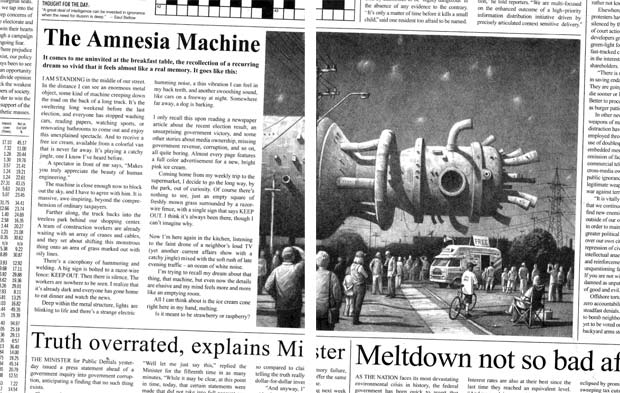
The triumph of Tales is Tan’s ability to write simple but not simplistic stories with visuals both postmodern and approachable. An heir to the Tristram Shandy technique of playing with readers’ expectations, the book also joins the ranks of the experimental “People of Paper” as a pioneer in recreating how to design and illustrate a book. Tan describes the relationship between illustration and words in his books, “The text and illustrations could operate as narratives in isolation, but happen to react in similar ways, opening new meanings from each other’s context.”
Tales, intended for kids 7-12, was an ALA Notable book as well as one of The New York Times Best Illustrated Children’s Books. You can read the story from it called “Amazon.
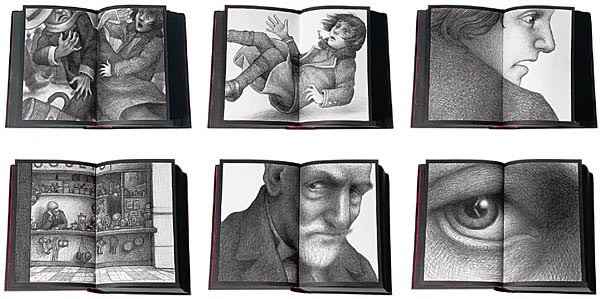
Like Tales, “The Invention of Hugo Cabret” is an equally imaginative reconfiguration of narrative structure and passionate attention to illustrations. Inspired by groundbreaking French filmmaker George Méliès’s work, author and illustrator Brian Selznick says of his process, “I thought about what happens when you turn the page in a picture book, the way stories are told. Then I thought, what if I took parts of the text out and replaced them with images. So that the book itself was filled with sequences of silent movies.”
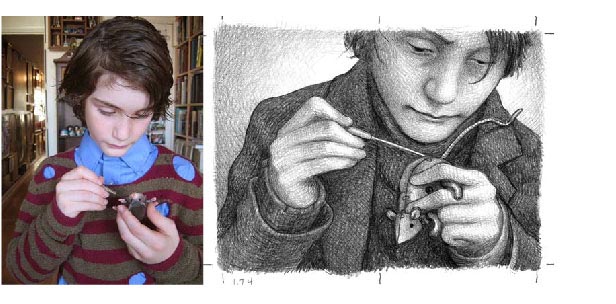
For this book (his fourth) Selznick photographed neighborhoods of Paris, aptly illustrating them into detailed black-and-white pencil and pen drawings to tell the story of Hugo Cabret. The narrative follows a young orphaned boy living in a train station, winding its numerous clocks, when he’s caught stealing a toy mouse, beginning the book’s journey.
Méliès was one of the first and major innovators of cinematic special effects, and serves as both character and major influence on Hugo Cabret, boy and book alike. Selznick often interrupts the text with his deft drawings to visually recount the adventures of Hugo—a refreshing approach to illustration that directs a slow, measured reading of the book.
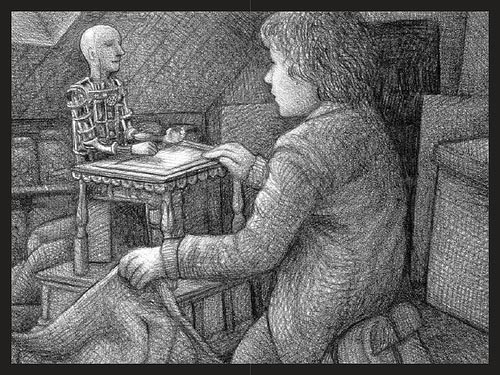
With a film reportedly in the works—Martin Scorsese is slated to direct Ben Kingsley and Sacha Baron Cohen—”The Invention of Hugo Cabret” proves an enduring and popular tale. It won the prestigious Caldecott medal for the most distinguished American children’s books and continues to garner acclaim.
At 550 pages, the tome is for 9-12 year olds. Many illustrations and tightly woven plot make it a quick and breathless read and a wonderful introduction to novels, or a reminder of how good they can be. Hugo Cabret sells from Amazon.
Puff, like Hugo Cabret, uses a limited palette—black, white and red—to show the dreams of a small steam engine. (Click above image for detail.) Recently profiled by our friend Paper Tastebuds, the elegantly designed book, written and illustrated by William Wondriska, follows the exploits of a feisty steam engine.
The simple illustrations (click above for detail) infuse Puff’s world with fantasy and beauty as the little engine travels the world. Close cousin to Thomas the Tank Engine, Puff’s visual feast elevates the story into a sweet moment of self-discovery and adventure.
Wondriska wrote and illustrated many children’s books, though Puff remains his most popular. Puff was republished by Taiwanese bookseller Itis Editions, but remains a difficult find. Despite the years, Wondriska’s works are distinctly modern and hopefully will regain the attention they deserve.

“The Monster at the End of this Book” uses the classic picture book format to stage a funny and surprising drama. Reviewed on Eileen Kern’s Tumblr, it recounts Sesame Street boy-wonder Grover’s adventures as a monster gets closer and closer.
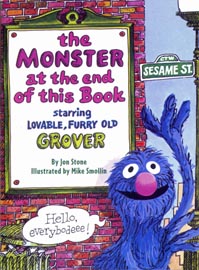
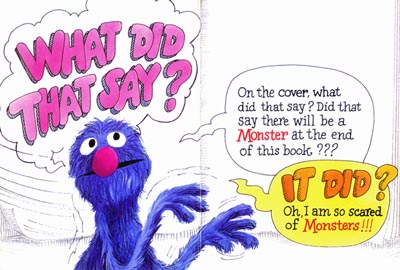
It begins with Grover talking directly to the reader. He’s excited to be in this book but he’s also very worried about the monster at the end, as the title indicates. What will it be? How will it turn out? The book transforms the horror of dreaded anticipation into something comedic and poignant. A simple yet unexpected story, you can read it online.
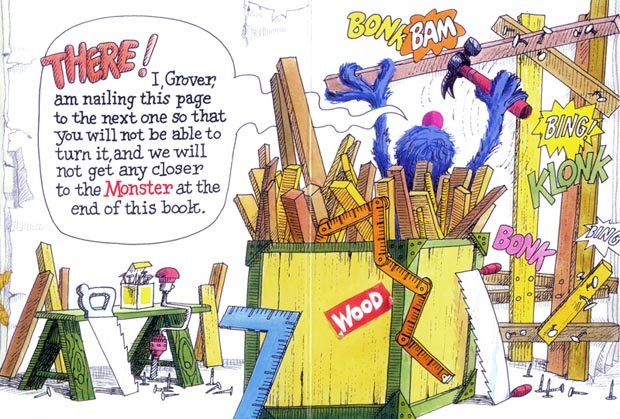
For kids 4-8, “The Monster at the End of this Book” is also available in Sesame Street Story Vision with a read-along DVD. The newest incarnation of the series introduces Elmo in Amazon.
